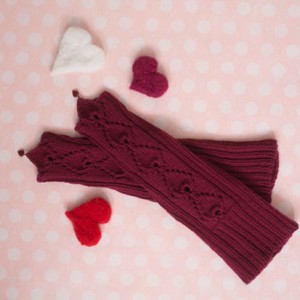I just
had to add beads to the picot cast-on. It's pretty easy albeit fiddly. Start by stringing beads onto your yarn - more than you think you'll need. (It's a simple matter to push extra beads along until you are at the end of the yarn. It's not at all easy to add more beads once your cast-on is started.)
Using a crochet chain as the base for the provisional cast-on, pick up a st in the first chain. Slide a bead up against the waste yarn. Pick up a stitch in the next chain, slide a bead up against the waste yarn. Again and again. And again. (Don't put a bead after the last stitch, though.)
Work the first row in k1, p1 ribbing, then follow the pattern from Row 2. Continue working the pattern as written until it's the desired length and bind off. Undo the waste yarn.
I found in the swatch pictured above that the picots holding the beads wanted to twist very severely. I got a row of beads with their holes pointing to the front. Not attractive. I thought this might be a function of the tight twist on the yarn I've been using so I tried a yarn with less twist. There was still twisting of the picots.

The most obvious solution was to see if blocking would help. It does, but not as well in the tightly
twisted yarn (above) as in the more loosely-spun yarn which is used in the photos to the right.
I don't tend to use blocking wires because I find that they catch on my work, but here I was just putting a length through the holes in the beads. I stretched the other edges of the swatch as usual, and used T-pins to hold the wire in place.
Up next will be another take on the twisting picots, as well as some pondering on bead spacing. Until then . . .




